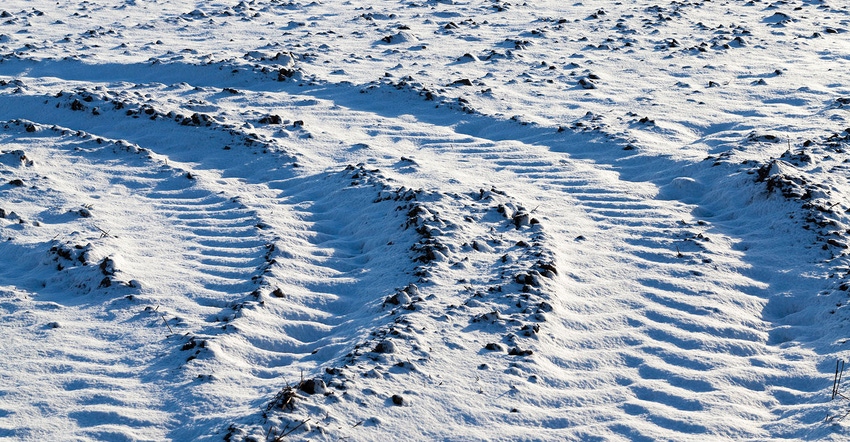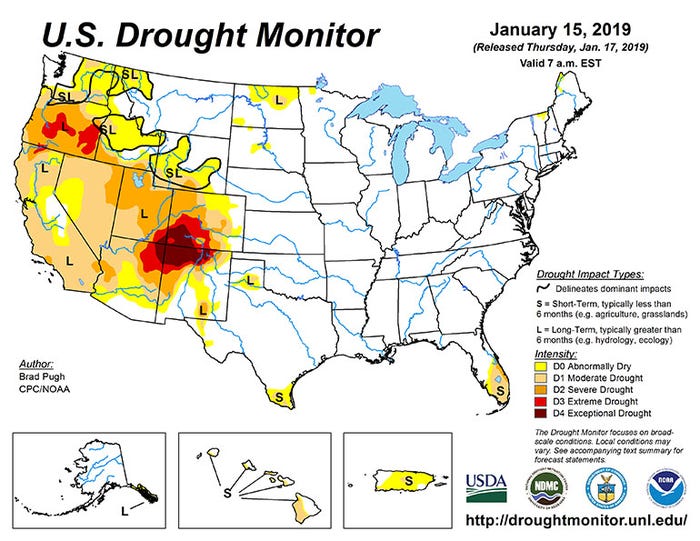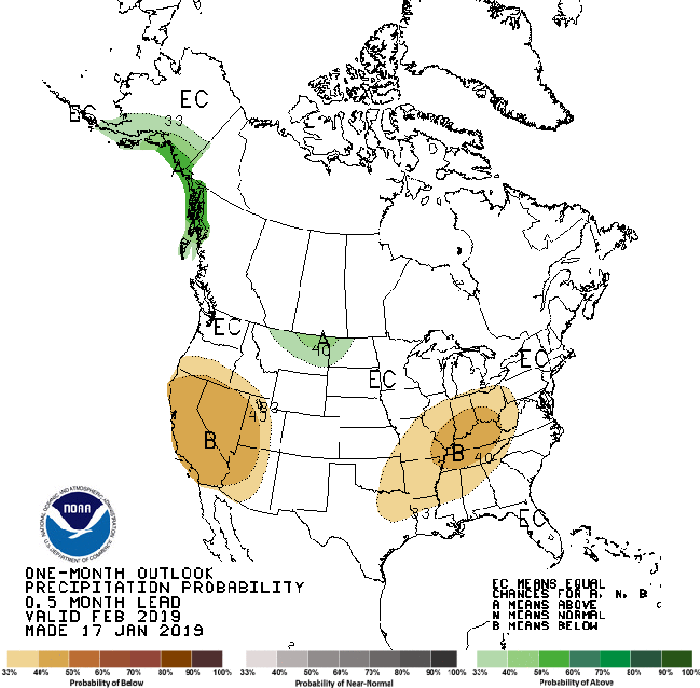
Grain markets have been eagerly watching South American weather the past few weeks, as drought conditions in some key production regions of Brazil had several consultancies significantly trimming their estimates for the country’s 2018/19 soybean production.
But in the United States, drought’s foothold this fall and winter have been meager at best – especially in the Midwest and parts of the Plains, according to the latest updates to the U.S. Drought Monitor, released January 17. For the week ending January 15, drought is only covering 31.5% of the country. That total did move slightly higher from the prior week’s 30.4% but still remains at its lowest levels since September 2017.

Drought’s presence in the Midwest at this time is nearly nonexistent, covering just 0.3% of the region in a small area in northern Minnesota. Compare that to the same time a year ago, when drought covered 34.1% of the region.
Drought’s presence in the High Plains, meantime, is relatively more severe, covering 32.6% of the region. Still, that number is well below the same time a year ago, when drought’s foothold in the High Plains was 82.7%. And most of the damage is confined to Colorado and Wyoming, which produce moderate amounts of row crops, to be sure – but the rest of the region (which the U.S. Drought Monitor defines as North Dakota, South Dakota, Nebraska and Kansas) remains relatively unscathed at this time.
As has been the case for several months, areas west of the Rockies have been plagued with the country’s worst drought levels. Some areas of southern Colorado, northern Arizona and Oregon are currently experiencing some D3 (extreme) and D4 (exceptional) drought conditions, which can have longer term hydrological and ecological impacts if they persist.

Looking at the latest five-day forecasts, parts of the central U.S. could receive additional drought-quenching precipitation over the next several days, according to NOAA meteorologist Brad Pugh.
“A swath of moderate to heavy snow and freezing rain is likely to accompany [the next] winter storm from the middle Mississippi Valley northeast to the northern mid-Atlantic and Northeast,” he writes in his latest summary for the U.S. Drought Monitor.
Areas to the west may also see some relief this coming week, he adds: “Widespread rain and high-elevation snow are forecast throughout the western U.S. through early next week with heavy snow likely across the Cascades, Sierra Nevada, and Rockies.”
Will drought’s seasonal slumber continue further out? In February, NOAA is predicting some drier-than-normal conditions for much of the Ohio River Valley and a large portion of the western U.S., with a small area of wetter-than-normal conditions more likely in a small part of North Dakota and Montana. The agency designates the rest of the U.S. as having “equal chances” for above- or below-normal precipitation to unfold next month.
About the Author(s)
You May Also Like






